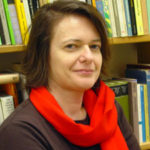The Fate of Popular Literature within and beyond the Goethezeit
Organizers: Christopher Chiasson, Graduate Student, Indiana University, cchiasso@indiana.edu, and Anita Lukic, Lecturer, University of Pittsburgh, alukic@pitt.eduResponses to Ian Watt’s The Rise of the Novel and work by Robert Darnton and Peter Brooks have directed attention to best-selling literature in Britain and France, but the topic remains understudied in other contexts. The German case is particularly relevant for exploring Franco Moretti’s contention that readers decide what becomes canonical, as the divergence between eighteenth-century popularity and current canonicity could hardly be greater: Iffland and Kotzebue were the most popular dramatists of the Goethe Era, not Lessing, Goethe, or Schiller; authors such as Pestalozzi, Salzmann, and Lafontaine wrote novels that out-sold Moritz and Wieland. Popular poets such as Johann Gleim and Wilhelm Müller have only remained canonical insofar as composers set their poems to music, in contrast to Novalis or Hölderlin. Moreover, canonical authors often enjoyed their greatest popular successes in genres that are now held in low esteem. Does Moretti’s thesis need to be revised given this disjunction? Can Darnton, Brooks, or Catherine Gallagher contribute to our understanding of German best-sellers? Papers addressing maligned or peripheral authors, works, or genres are encouraged, as well as those considering the institutions of canonization. So-called “minor” literatures and comparative perspectives are also welcome.250 words abstract by September 15.
Goethe and the Visual Arts
Organizer: Matt Feminella, Assistant Professor, University of Alabama, mfeminella@ua.eduGoethe’s fascination with and commitment to the visual arts remains an enduring feature of his oeuvre. From painting and sculpture to architecture and the performing arts, Goethe’s theoretical works engage with a remarkably wide array of visual media, and these art forms also make frequent appearances in his novels and plays. This panel seeks new responses to Goethe’s intervention in discourses on the visual arts. While we invite contributions from scholars working within German Studies, we particularly welcome contributions that address this topic comparatively, as well as from the perspective of other disciplines (including but not limited to history, art history, philosophy, design, etc.) With this panel, we seek to expand upon the discussion initiated by the Goethe Society of North America in a recent special section of the Goethe Yearbook.250 words abstract by September 15.
Material Culture Studies and Eighteenth-Century Germany
Organizer: Karin Wurst, Professor, Michigan State University, wurst@msu.eduThings loom large in eighteenth-century culture. We see the emergence of the lifestyle magazine such as the Journal des Luxus und der Moden that introduces and depicts fashionable furniture, decorative objects and dress to a broad readership. Household books allow glimpses at coveted objects and their place in the household economy. Collecting was no longer limited to the elites. Toys and picture books entered the nursery. Not only writers saw themselves in “conversation with things” (Goethe 1786), but the general interest in objects of material culture including the visual arts reshapes the relationship between the self and the environment.British material culture studies and visual studies engage in vibrant theoretical discussions that could further stimulate the discussion in the German contexts. We seek contributions that explore the theoretical debates or the role of things in literary or theoretical texts, in periodicals, inventories, autobiographical writings, and letters. Questions could explore the implications of the new material landscape on the domestic sphere, on our understanding of gender roles, or on our view of childhood. How does the interest in things shape the relationship between everyday culture and high-culture? How does it influence consumption practices? We also welcome papers on comparative aspects in methodology and material cultural practice.300 words abstract and a short bio by September 15.______Other Calls for Papers at ASECS 2018


